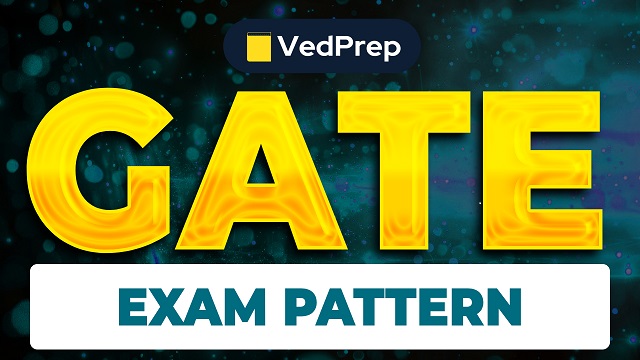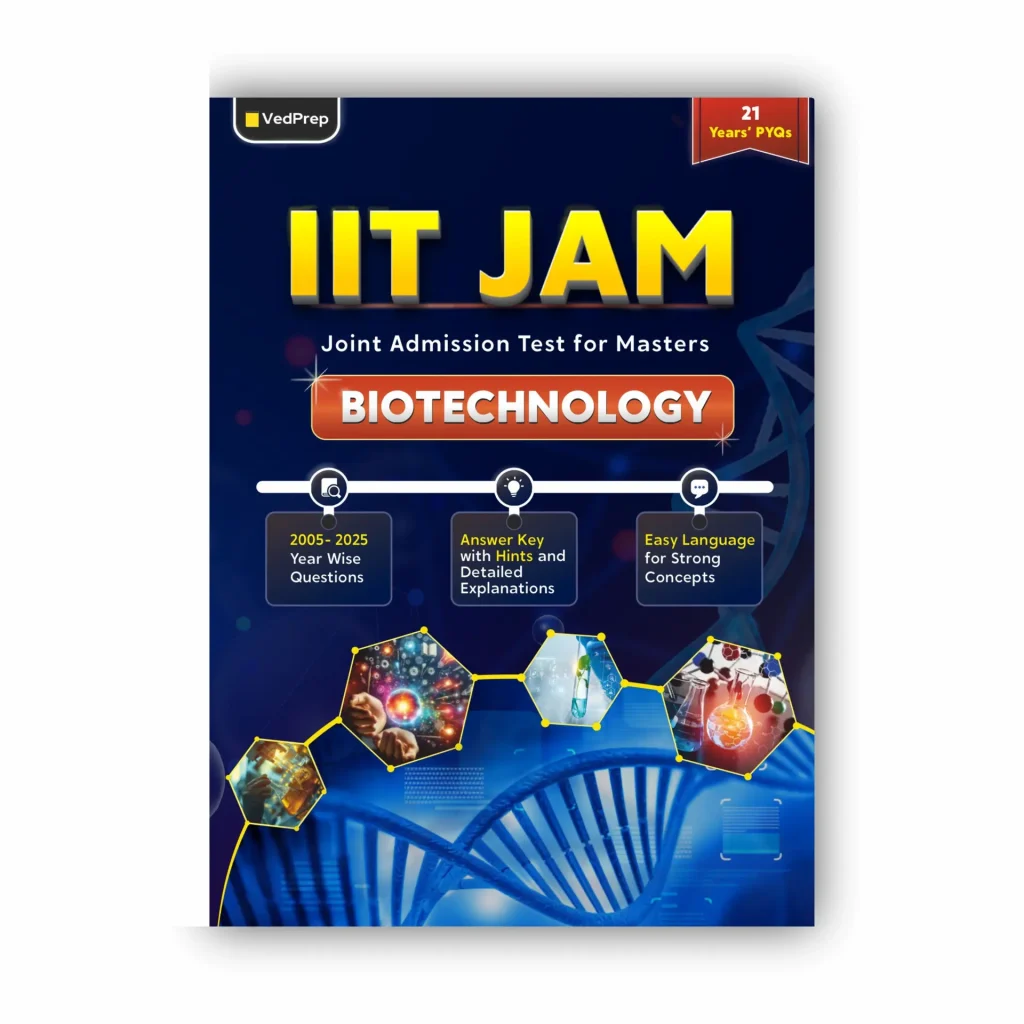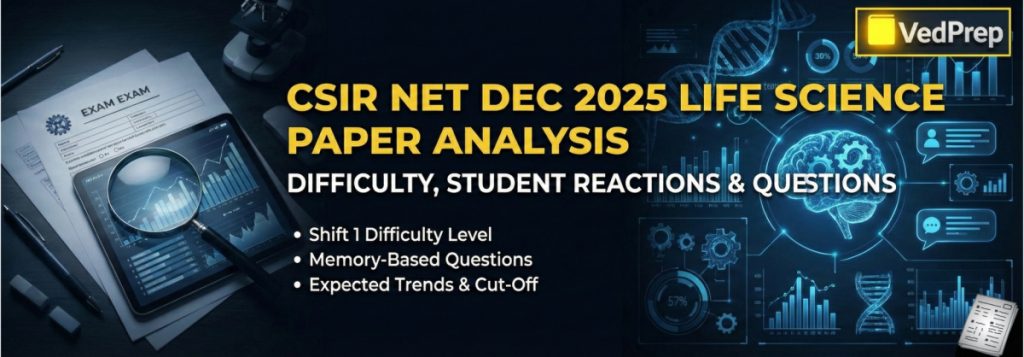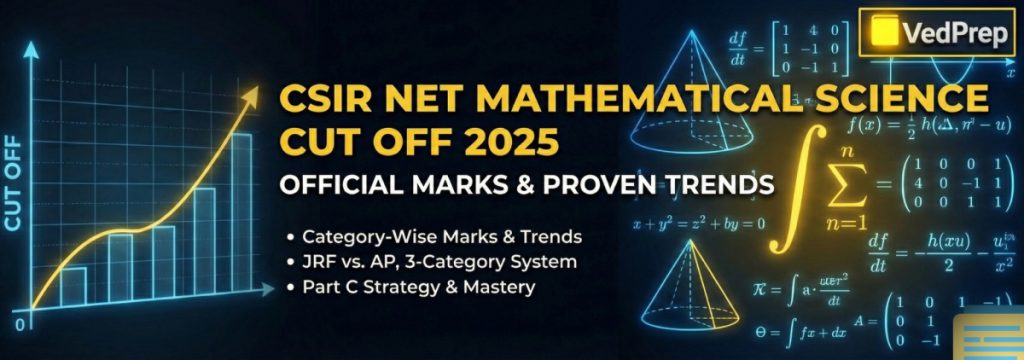GATE Exam Pattern 2026 has been released by IIT Guwahati, conducting authority. Candidates who are planning to appear in Graduate Aptitude Test in Engineering (GATE Exam 2026), it is vital that you are aware of GATE Exam pattern 2026 so that you can have a plan for how to prepare and achieve better scores. This article provides details on GATE Exam Pattern 2026, covering marking scheme, total marks, subject-wise weightage, and passing marks for 2026.
GATE is a national-level exam for ME/ M.Tech/PhD admissions and recruitment in top PSUs (ONGC, IOCL, BHEL, etc.). GATE is administered by IISc Bangalore and 7 IITs (Bombay, Delhi, Kanpur, Kharagpur, Madras, Roorkee, and Bhubaneswar) and tests understanding of candidate’s understanding of concepts and their analytical abilities.
GATE Exam Pattern 2026
Candidates appearing for GATE Exam 2026 should thoroughly review GATE Exam Pattern 2026 to understand its marking scheme, question pattern, total time, and other relevant details. IIT Guwahati will conduct GATE Exam 2026 for 30 different branches.
To prepare in a streamlined and organised way, candidates should review GATE Exam Pattern 2026. We have provided a detailed GATE exam pattern 2026 here
| GATE Exam Pattern 2026 | |
|---|---|
| Particulars | Details |
| Exam Name | GATE 2026 |
| Conducting Body | IIT Guwahati |
| Exam Mode | Online (Computer-Based Test) |
| Duration | 3 Hours (180 minutes) |
| Number of Papers | 30 (including interdisciplinary papers) |
| Number of Questions | 65 |
| Types of Questions | MCQs, MSQs, NATs |
| GATE Exam Total Marks | 100 |
| Sections | General Aptitude + Subject-specific (with Engineering Mathematics in most papers) |
GATE Exam Pattern 2026 Marking Scheme
To maximise marks and prevent negative marking, it is essential to comprehend GATE exam scoring structure. Marks are distributed based on difficulty level.
Detailed GATE Exam Pattern 2026 Marking scheme with negative marking is provided in table below
| GATE Exam Pattern 2026 Marking Scheme | ||
|---|---|---|
| Type of Question | Marks | Negative Marking |
| MCQ (1 Mark) | +1 | –⅓ |
| MCQ (2 Marks) | +2 | –⅔ |
| MSQ | +1 or +2 | No |
| NAT | +1 or +2 | No |
GATE Exam Pattern 2026 Total Marks and Sectional Distribution
GATE Exam consists of three sections and a total of 100 marks. The number of questions for general sections is decided, i.e. 15 questions. While in core subjects, the number of questions, such as MCQs, MSQs, and NATs, varies based on the stream.
GATE Exam Pattern 2026 total marks and sectional distribution is provided in the table below
| GATE Exam Pattern 2026 Total Marks and Sectional Distribution | ||
|---|---|---|
| Section | Marks | Number of Questions |
| General Aptitude (GA) | 15 marks | 10 questions |
| Engineering Mathematics* | 13–15 marks | Varies by paper |
| Subject-Specific | 70–72 marks | Based on stream |
| Total marks | 100 | |
GATE Exam Pattern 2026 Subject Wise Weightage
GATE Exam Pattern 2026 Subject wise weightage varies based on the paper. Gate Exam primarily follows two specific patterns: papers with Engineering Mathematics and Core subjects, and papers without Engineering Mathematics. General Aptitude is compulsory for both categories and contributes equal marks.
GATE Exam Pattern 2026 subject wise weightage is provided in table below
| Category | Applicable Papers | Section | Marks | Weightage |
| Papers with Engineering Mathematics + Core Subject | AE, AG, BM, BT, CE, CH, CS, EC, EE, ES, IN, ME, MN, MT, NM, PE, PI, TF, XE | General Aptitude (GA) | 15 | 15% |
| Engineering Mathematics | 13 | 13% | ||
| Core Subject | 72 | 72% | ||
| Total | 100 | 100% | ||
| Papers without Engineering Mathematics | AR, CY, EY, GG, MA, PH, ST, XH, XL | General Aptitude (GA) | 15 | 15% |
| Subject Questions | 85 | 85% | ||
| Total | 100 | 100% |
Different Paper Patterns (Subject-Specific)
| Paper Code | Section Breakdown |
| AR | GA (15) + Part A (60) + Part B1/B2 (25); B1 = Architecture / B2 = Planning |
| GE | GA (15) + Part A (55) + Part B (30); choose between 2 subsections |
| GG | GA (15) + Part A (25) + Part B (60); choose either Geology or Geophysics |
| XE | GA (15) + Section A (Maths – 15) + Two Sections from B to H (35 marks each) |
| XH | GA (15) + B1 Reasoning (15) + One optional section C1–C6 (60 marks) |
| XL | GA (15) + Section P Chemistry (25) + Two from Q to U (30 marks each) |
GATE Exam Pattern 2026 Negative Marking
GATE Exam Pattern 2026 Negative Marking is applied only on MCQ type questions, and there is no negative marking on NATs and MSQs.
GATE Exam Pattern 2026 Negative Marking is provided in table below
| Question Type | Correct Answer | Wrong Answer | Negative Marking |
| 1-mark MCQ | +1 | -1/3 | Yes |
| 2-mark MCQ | +2 | -2/3 | Yes |
| MSQ/NAT questions | As per the marks | No penalty | No |
GATE Exam Pattern 2026 Passing Marks
GATE exam Pattern 2026 passing Marks will vary based on Difficulty level of question Paper, number of available seats, total no. of candidates appearing in Exam and more.
Expected GATE Exam Pattern 2026 Passing Marks category wise are provided in table below
| Category | Expected Passing Marks (out of 100) |
| General (UR) | 26–32% |
| OBC (NCL)/EWS | 90% of the General cutoff |
| SC/ST/PwD | 2/3 of the General cutoff |
*Note that across Canada, qualifying scores for admissions into higher-ranked universities and PSUs tend to be much higher than the passing scores.
Also read GATE Cutoffs
GATE Exam Pattern 2026 for Multi Disciplinary Papers
Exam formats vary for some GATE papers, such as XE (Engineering Sciences), XL (Life Sciences), and XH (Humanities).
Example: XE Paper
- Section A (Engineering Mathematics): Mandatory
- Any two from B to H sections: Candidate selects
- Total Marks: 100 (GA = 15, B to H = 85)
GATE Exam Pattern 2026 Paper Code
GATE officials have given a specific code for various papers; with the help of that code, candidates can easily know about their paper. This also helps during form filling and for various purposes. GATE Exam pattern 2026 paper code are given in table below
| GATE Exam Pattern 2026 Paper Code | ||
|---|---|---|
| 1 | Aerospace Engineering | AE |
| 2 | Agricultural Engineering | AG |
| 3 | Architecture and Planning | AR |
| 4 | Biotechnology | BT |
| 5 | Civil Engineering | CE |
| 6 | Chemical Engineering | CH |
| 7 | Computer Science and Information Technology | CS |
| 8 | Chemistry | CY |
| 9 | Electronics and Communication Engineering | EC |
| 10 | Electrical Engineering | EE |
| 11 | Ecology and Evolution | EY |
| 12 | Geology and Geophysics | GG |
| 13 | Instrumentation Engineering | IN |
| 14 | Mathematics | MA |
| 15 | Mechanical Engineering | ME |
| 16 | Mining Engineering | MN |
| 17 | Metallurgical Engineering | MT |
| 18 | Petroleum Engineering | PE |
| 19 | Physics | PH |
| 20 | Production and Industrial Engineering | PI |
| 21 | Textile Engineering and Fiber Science | TF |
| 22 | Statistics | ST |
| 23 | Biomedical Engineering | BM |
| 24 | Engineering Sciences | XE |
| 25 | Life Sciences | XL |
| 26 | Humanities and Social Sciences | XH |
| 27 | Environmental Science and Engineering | ES |
| 28 | Geomatics Engineering | GE |
| 29 | Naval Architecture and Marine Engineering | NM |
| 30 | Data Science and Artificial Intelligence (NEW) | DA |
GATE Exam Pattern 2026 For Paper Code XH
| XH Paper Section | CODE |
| Reasoning and comprehension (compulsory) 25 marks | B1 |
| Any of the following Optional Subjects (60 marks ) | |
| Economics | C1 |
| English | C2 |
| Linguistics | C3 |
| Philosophy | C4 |
| psychology | C5 |
| Sociology | C6 |
GATE Exam Pattern 2026 For Paper Code XE & XL
| XE Paper Section | Code | XL Paper Section | Code |
| Engineering Mathematics (Compulsory) | A | Chemistry(Compulsory) | P |
| Fluid Mechanics | B | Biochemistry | Q |
| Materials Science | C | Botany | R |
| Solid Mechanics | D | Microbiology | S |
| Thermodynamics | E | Zoology | T |
| Polymer Science and Engineering | F | Food Technology | U |
| Food Technology | G | ||
| Atmospheric and Oceanic Science | H | ||
Also read GATE PYQs
| Related Articles | ||
| GATE Application Form 2026 | GATE Previous year Question Paper | GATE Cutoff |
| GATE Participating institutes | GATE Exam Date 2026 | GATE Admit Card 2026 |
GATE Exam Pattern 2026 FAQs
How many questions are there in the gate exam?
The GATE exam contains 65 questions. 10 from General Aptitude and 55 from the subject sections.
How is the gate exam marking scheme structured?
The GATE exam contains 1 and 2-mark questions. There is negative marking in MCQs; however, with MSQ and NAT, there is not.
What are the passing marks for the gate exam 2026?
Passing marks are different every year. For the General category, they are usually between 26 and 32 out of 100.
How many marks does the General Aptitude carry?
General Aptitude is 15 marks for every paper.
What is the subject-wise weightage in GATE?
The subject-wise weightage is different. In core streams, there are roughly 70% core subjects, and the remaining are Mathematics and Aptitude.














